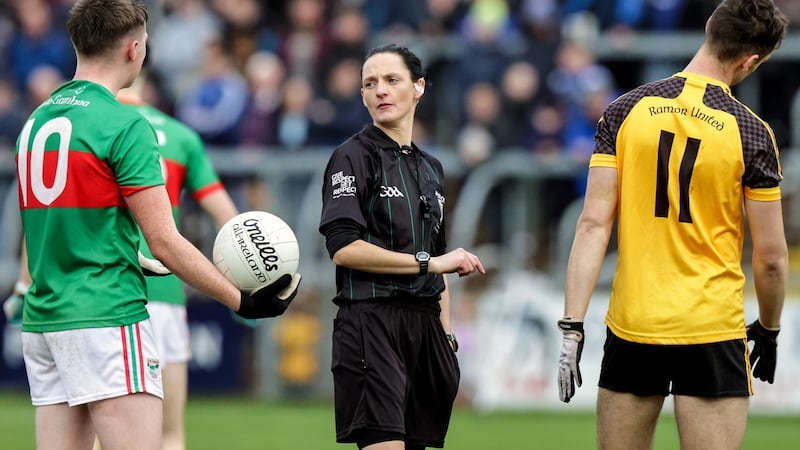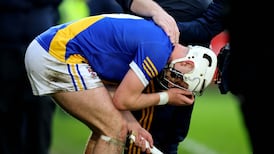Is the movement towards the integration of Gaelic games now unstoppable? It’s probably no surprise that the move to amalgamate the women’s Gaelic games organisations with the GAA is most forcefully advocated by players.
The Gaelic Players Association have a motion down for debate at the GAA's annual congress in 10 days time, presumably hoping to crystallise opinion on the matter.
Motion 33 calls on the association “to prioritise integration with the LGFA and Camogie Association in order to jointly ensure equal recognition, investment and opportunity for all genders to play all sports in the Gaelic games family”.
The players’ body practises what it preaches and the year before last in an almost unanimous vote, both the GPA (100 per cent) and the WGPA (96 per cent) decided to join together and implement governance structures to reflect the new membership.
The practical benefits of amalgamation were seen in the GPA when last May women were allocated the same Government grants to intercounty players as men receive.
Contemporary players have grown up together, even sharing clubs - formally in recent years under the one club model, which although widely praised and successful since its introduction in 2017, is not universal.
They are aware of each other as footballers, hurlers and competitors and less patient with the apartheid system of governance.
By coincidence the same day as the GAA released the motions list for congress, the fixtures for the coming weekend revealed that Cavan's Maggie Farrelly is to become the first woman to officiate at a men's national league match.
I remember when we were training at minor and we actually won the All-Ireland that year, we couldn't find a pitch
It’s taken a while but there’s no surprise over the identity of the individual. Last weekend Farrelly was the side-line official at the All-Ireland club football final between Kilcoo and Kilmacud Crokes and has been refereeing men’s intercounty matches since 2015.
It’s not exactly astonishing in the 2020s that the league referees panel now includes a woman and if the behaviour towards referees wasn’t so appalling, this may well have happened before now.

There remains much to be done in equalising other elements of the games, such as facilities and venues.
In that respect it was interesting to hear two elite players talking about their views of integration and the place of women in Gaelic games at a commercial launch this week.
Erika O'Shea and Sarah Dervan are at opposite ends of their respective careers - the former a football All Star last year at 19 and the latter an All-Ireland winning camogie captain in her 30s.
O’Shea expressed her frustrations with what she sees as disparity in the treatment of the games.
“We were discussing why we’ve always had problems with pitches and trying to get gyms for teams. I feel like the lads don’t have that problem.
“I remember when we were training at minor and we actually won the All-Ireland that year, we couldn’t find a pitch. We were training on the side of a pitch and running up and down the side of it. Those kind of things are disheartening.”
Personally, I'd love to get out of this 'women in sport' to where it's just seen as sport and it's all equal
Dervan also spoke about the difficulty of securing training facilities, even for All-Ireland champions. “We’ve trained on astroturf an awful lot this year so far and we’re thankful of getting it, but it’s not ideal.”
Unsurprisingly, both see integration as desirable.
“All my teammates want to see the merger happening,” said O’Shea. It would change everything for girls in sport The WGPA and the GPA joined and that has made a big difference.”
For Dervan, even her sport’s different name is unnecessary. Asked would she like it simply to be called ‘hurling’ and played to the same rules, she didn’t hesitate.
“Yeah, I would love that. That’s my opinion.
“Personally, I’d love to get out of this ‘women in sport’ to where it’s just seen as sport and it’s all equal. I don’t really have much preference if it’s called camogie or hurling. I’d always say that somebody on the pitch is ‘a fantastic hurler’, and that’s just the nature of where I came from. I just associate it all as one.”
Pressure has been building. The 2018 ‘Towards 2034’ report on challenges facing the GAA approaching its 150th anniversary was categorical.
“The one club model is a rational and common-sense approach and exemplifies a grass-roots development that is very much within the ethos and philosophy of the Gaelic games family.
“The one club model is not, however, mirrored at national level, with separate associations (GAA, The Camogie Association and Ladies Gaelic Football Association) that collaborate to a greater or lesser extent. A single governing body, at club, county, regional, national and international levels, is now required providing equity for all players.”
As long ago as 2002, the strategic review committee made the point in its report: “Formal integration of Gaelic football, women’s football, hurling and camogie is necessary if the task of promoting Gaelic games to 50 per cent of the population is not to be left entirely to two very committed and energetic bodies which, as things stand, have too few resources and very little finance.”
In his annual report 20 year later, GAA DG Tom Ryan recognised the mood for change but also the sensitivities involved on the part of the women’s organisations some of whom fear takeover rather than integration. The overall mood is, however, clear.
“Member consultation as part of the recently launched GAA Strategic Plan identified an overwhelming desire for the three associations to come together. So, I hope and expect that we can start exploring parallels at governing body level in the coming months.
“The parameters of any discussions will have to be set out clearly of course. Any amalgamation can only work - indeed can only happen - when each party is completely happy with the shape, extent and pace of change.”
He concluded less guardedly. “Clearly, momentum is building.”













